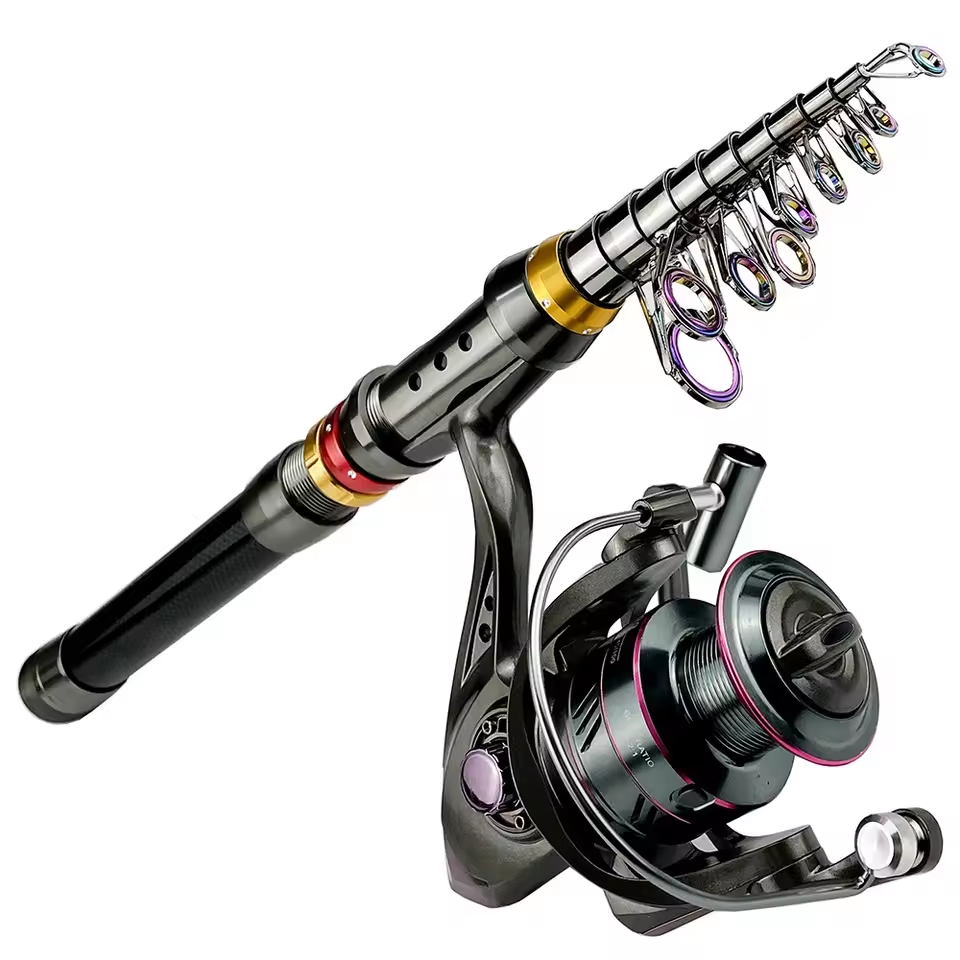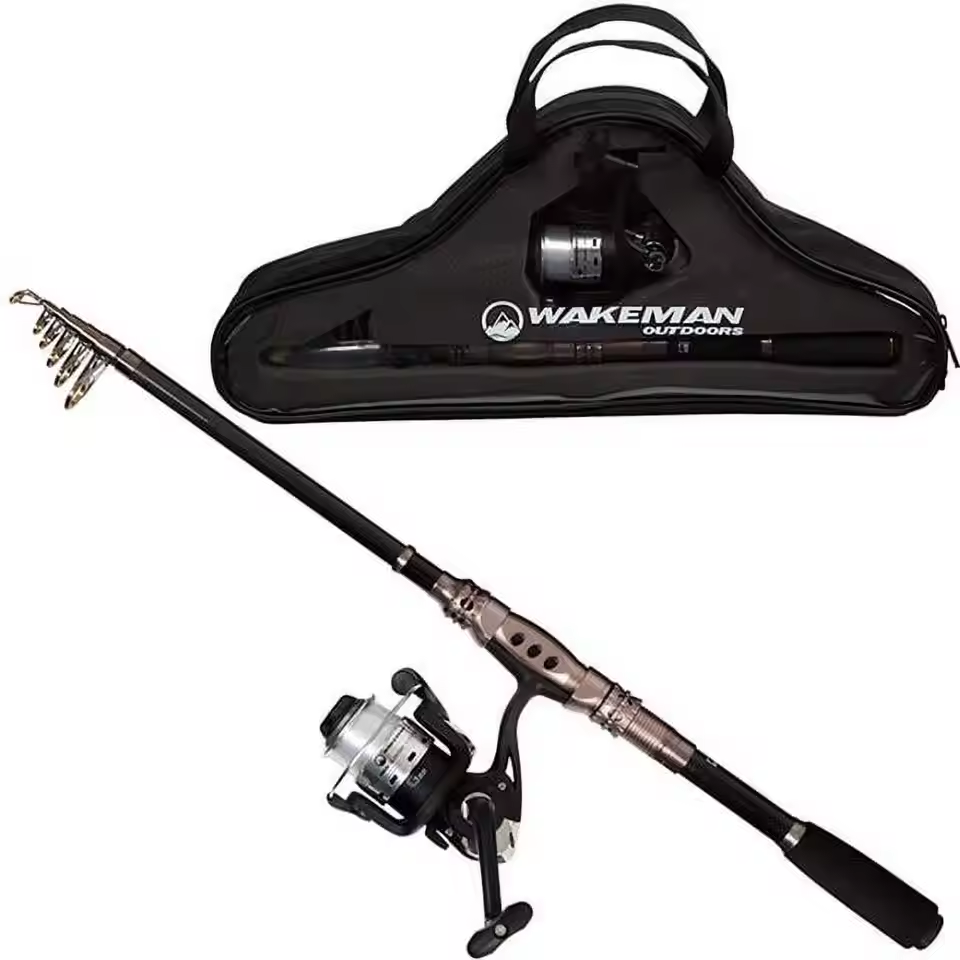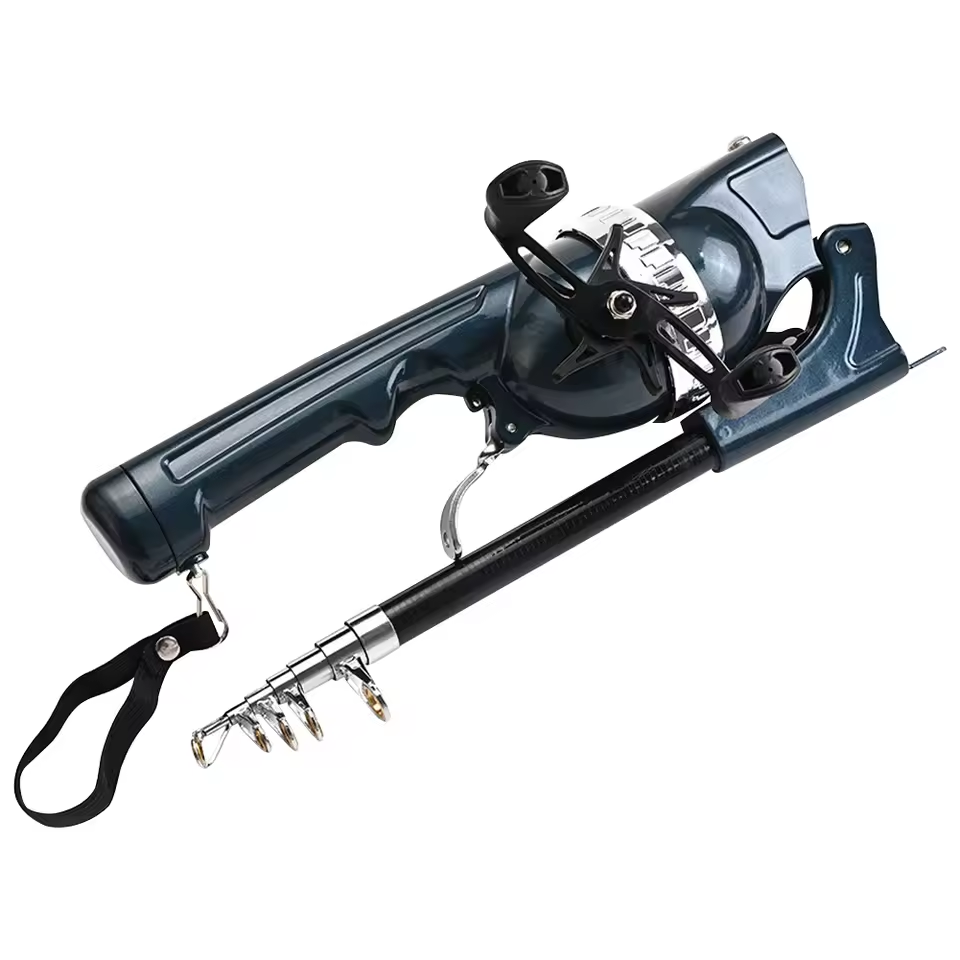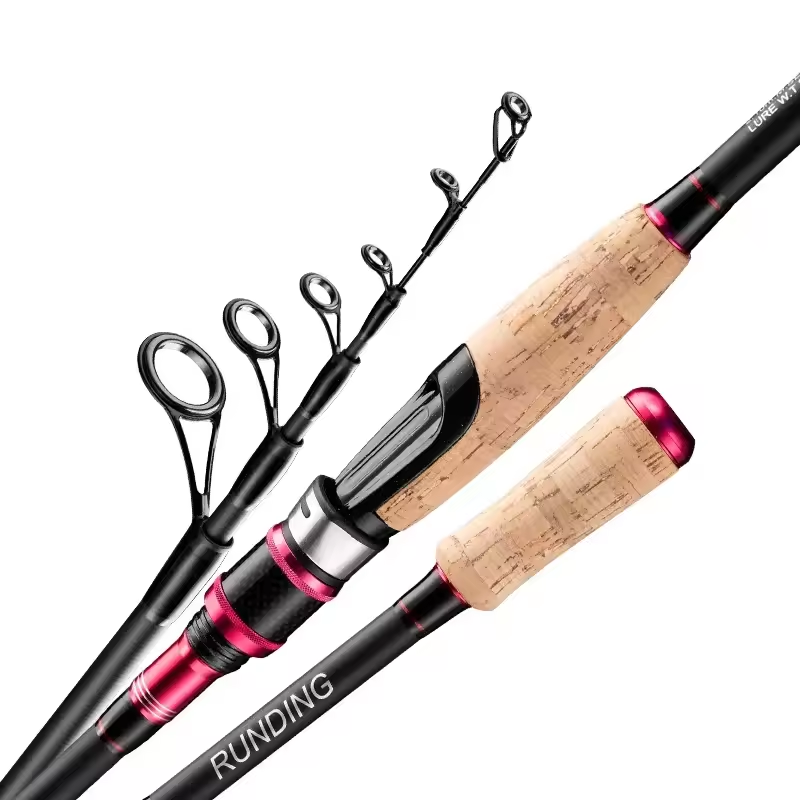Introduction to Telescopic Fishing Rods
Telescopic fishing rods are the go-to gear for mobile anglers. Their ability to collapse into a compact form makes them a favorite for travelers and those with limited storage space. Imagine having a full-sized fishing rod that can shrink down to fit into your backpack or car trunk with ease!
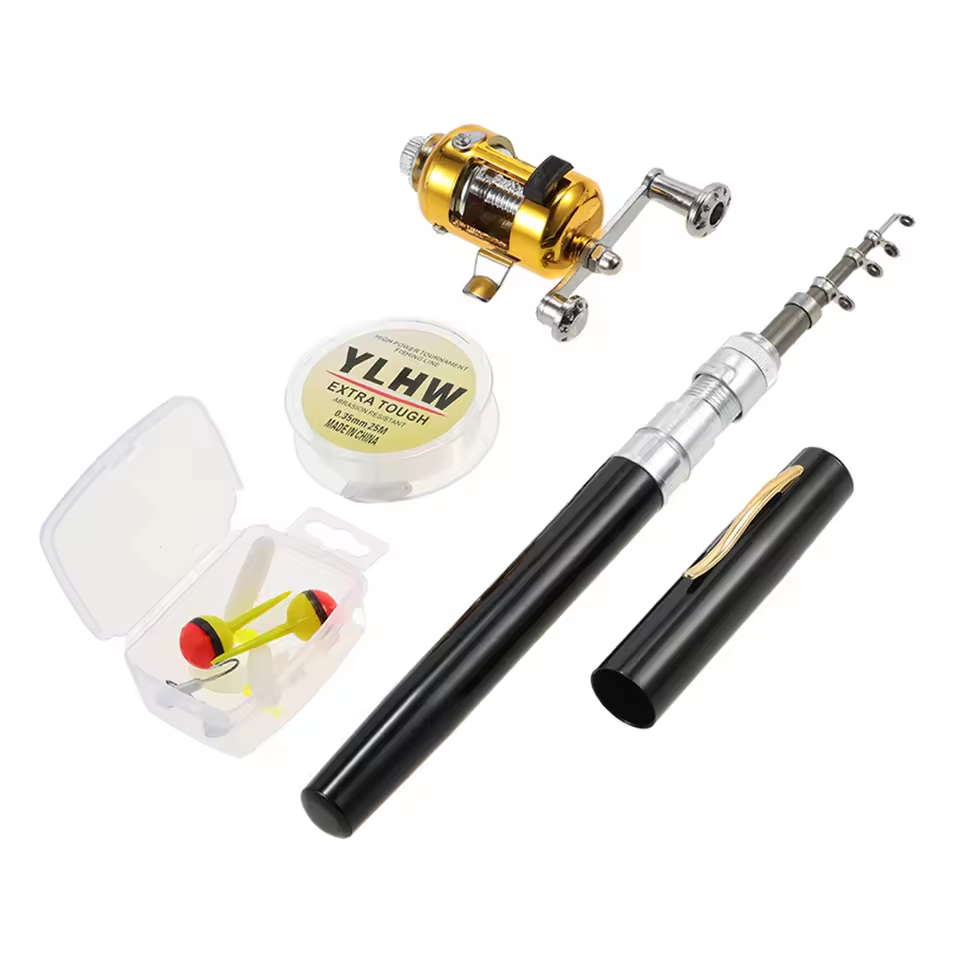
These rods are designed with sections that slide into one another, allowing for their distinctive telescoping action. When you arrive at your fishing spot, you just extend each segment until it locks into place, and you’re ready to cast. This feature is ideal for those spur-of-the-moment fishing opportunities or for anglers who prefer to travel light.
Most telescopic rods are made from durable materials like carbon fiber, graphite, or a mix of both. This helps them stand up to the stress of casting and fighting fish, though they’re often not as robust as traditional one-piece rods. Despite this, manufacturers have been improving the strength and sensitivity of these rods, giving many models a close-to-traditional rod performance.
In essence, a telescopic fishing rod is a portable, space-saving alternative to the standard fishing rod. It offers convenience and functionality, which is why it’s a must-have for certain fishing situations and angler preferences.
Factors to Consider When Selecting a Telescopic Rod
When choosing a telescopic fishing rod, key factors need your attention. These include the rod’s material and construction, length and action, power and strength, as well as its collapsed size and portability.
Material and Construction
Select a rod made from durable stuff like carbon fiber or graphite. These materials give strength yet keep the rod light. Check for sturdy construction. This ensures your rod can take the stress of fishing.
Rod Length and Action
Decide on length based on where you’ll fish. Longer rods cast farther, shorter ones give better control. Action—how a rod bends—matters too. Fast action for sensitivity, slow for flexibility.
Power and Strength
Rod power tells you how much load it can handle. Heavy power for big fish, light power for small ones. Pick a rod that matches the fish you target.
Collapsed Size and Portability
If you travel a lot, get a rod that’s small when collapsed. This makes it easy to pack and carry. Look for one that fits in your backpack or car easily.
Advantages of Using a Telescopic Fishing Rod
Telescopic fishing rods have unique benefits for anglers. Here are some advantages that make these rods popular:
Portability
Telescopic rods collapse into a shorter length. They are easy to transport and store.
Convenience
These rods are ready in moments. They are perfect for impromptu fishing trips.
Versatility
They fit various fishing styles and environments. Anglers use them in both fresh and saltwater.
Space Saving
Telescopic rods save space at home and during travel. They fit in small compartments.
Ease of Use
Setting up a telescopic rod is simple. It unfolds and locks quickly for use.
Reduced Gear Load
Travel light without compromising on gear. A telescopic rod offers full rod function.
Accessibility
These rods suit every level of angler, from beginner to expert. Anyone can handle them.
Affordability
Telescopic rods cover a range of prices. They often cost less than traditional rods.
Choosing a telescopic fishing rod means prioritizing ease and adaptability. Their design offers a balance of performance and convenience. Always consider these key advantages when selecting your fishing rod. They might just enhance your fishing experience.
Telescopic Rods for Different Fishing Environments
Navigating diverse fishing settings is effortless with a telescopic rod.
Freshwater Fishing with Telescopic Rods
Freshwater fishing brings variability. Seek telescopic rods accommodating lakes, rivers, and streams. Lighter, more sensitive rods work well for smaller, freshwater species. Extendable features aid in reaching tight spots common in freshwater environments. A medium-action telescopic rod often strikes the right balance for most freshwater situations.
Saltwater Fishing and Telescopic Rods
Saltwater fishing tests gear durability. Choose corrosion-resistant telescopic rods, especially those made with materials like high-grade carbon fiber or reinforced fiberglass. Longer, more powerful rods suit ocean fishing. They withstand heavy fish and rough conditions. When targeting ocean heavyweights, prioritize rods with high power ratings and strong joint mechanisms. A telescopic rod with these qualities serves well for various saltwater challenges.
Matching Your Telescopic Rod with the Right Reel
When you’ve settled on a telescopic fishing rod, pairing it with the correct reel is crucial. The right combination will ensure you have a well-balanced setup, offering you the best chance for successful fishing. Here’s what to keep in mind when selecting a reel for your telescopic fishing rod:
Compatibility and Balance
Choose a reel that fits comfortably on the rod’s seat. A snug fit prevents wobble and maintains balance. Test the rod and reel together to feel for even weight distribution.
Reel Size
Pick a size that matches your rod’s power and length. Smaller reels work well with light rods, while larger reels are better for heavier setups. This prevents overpowering the rod or straining the reel.
Type of Reel
Decide on a spinning or baitcasting reel. Spinning reels are user-friendly, great for beginners or casual trips. Baitcasting reels cater to precision and are suitable for experienced anglers.
Gear Ratio
Consider the gear ratio for retrieval speed. Higher ratios retrieve faster, perfect for quick reeling. Lower ratios offer more power for heavy fish. Think about the fish you target and choose accordingly.
Material and Durability
Look for corrosion-resistant materials, like aluminum or graphite. This ensures your reel lasts longer, especially in saltwater conditions. Durable materials also withstand the demands of different fish sizes.
Drag System
Check the reel’s drag system. A smooth, adjustable drag allows you to manage fighting fish without breaking the line. It’s a vital feature that can make or break your fishing experience.
Line Capacity
Ensure the reel can hold enough line for your fishing style. Long-distance casting requires more line. More line also helps when battling larger fish that tend to run.
Remember, the aim is to create harmony between your telescopic rod and the reel. This balance boosts your control and confidence while fishing. Choose wisely, and you’ll enjoy a seamless fishing experience with your compact and portable gear.
Maintenance and Care for Telescopic Rods
Proper maintenance extends the life of your telescopic rod. Regular cleaning and careful storage are key. Here’s how to keep your rod in top condition:
Cleaning After Use
Rinse your rod with fresh water after each outing. This removes dirt, sand, and salt that can harm it. Use a soft cloth to wipe down each section. Make sure it’s completely dry before collapsing it.
Storage Tips
Store your rod in a dry place when not in use. Avoid extreme temperatures and humidity that can weaken materials. Use a rod case to protect it from dust and scratches. Keep it away from heavy objects that might bend or damage it.
Checking Joints and Guides
Inspect the joints and guides before and after fishing. Ensure they are tight and not damaged. Lubricate the joints if necessary to keep them smooth. Replace any broken parts promptly to avoid further damage.
Gentle Handling
Extend and collapse your telescopic rod with care. Do not force it if it sticks. Twisting gently can help if it’s stiff. Avoid high-impact areas while casting to prevent damage.
Regular Inspection
Regularly check for cracks, splits, or wear. Look at the rod’s sections, guides, and tip. Take action at the first sign of damage. This might involve repairing or replacing parts.
By following these simple steps, your telescopic fishing rod will serve you well. Keeping it clean, safe, and in good repair is the best way to ensure it’s ready for your next fishing adventure.
Budget Considerations for Buying a Telescopic Rod
When shopping for a telescopic fishing rod, your budget plays a big role. It determines what kind of rod you can get. Here are things to think about:
Quality vs. Price
High-quality rods cost more. But they perform better and last longer. Cheaper rods save money now but might break sooner.
Beginner or Pro
If you’re new to fishing, start with a lower-priced rod. As skills grow, invest in a pricier model.
Frequency of Use
Think about how often you’ll fish. If fishing’s a rare hobby, a basic rod works fine. For regular use, spend more on durability.
Material and Features
Better materials like carbon fiber add to the price. Extra features like special guides or reel seats do, too.
Brand Reputation
Well-known brands often charge more. Yet their products often promise reliability. Research to find the best balance of cost and quality.
Additional Gear
Consider costs for a reel, line, and lures. Some rods come as combos, saving you money on a full setup.
Long-Term Investment
Cheaper rods might need replacing often. A higher initial cost could save money over time due to better durability.
Keep these factors in mind to find a rod that fits your budget and fishing needs. Remember, the costliest option is not always the best for you.
Expert Tips for Choosing the Right Telescopic Rod
Choosing the right telescopic fishing rod may seem tricky. Yet with some expert tips, you can make a well-informed decision. First, think about your fishing conditions. Will you be by the shore or on a boat? Next, consider the fish species. Size and power requirements change with different catches. When examining rods, quality is key. Durable rods might cost more but can handle more challenging conditions. Ease of use is another major factor. The rod should extend and collapse smoothly. Also, look for rods that stay firm when fully extended. Make sure the rod feels balanced in your hand. It should match your preferred casting style.
Telescopic rods vary in length and action. Pick one that suits your fishing technique best. For tough battles, you need a rod with the right power rating. Remember, more sections may affect the rod’s strength and sensitivity. Fewer sections usually mean better durability. Don’t forget about the collapsed size. A smaller collapsible length is great for travel. Lastly, do your research. Read reviews, watch videos, and ask for recommendations. Find a brand that is reputable for quality and reliability. Use these tips, and you’ll find a telescopic rod that’s your perfect fishing partner.
Conclusion: Finding the Perfect Telescopic Rod for Your Next Adventure
Wrapping up your quest for the right telescopic fishing rod comes down to personal needs. Think about where and how often you’ll fish. Do you need something for quick trips or frequent use? Assess the space you have for gear. A compact rod that fits in tight spots could be your best pick.
Remember to weigh the price against long-term value. A pricier rod might resist wear better than cheaper options. Think about the species of fish you’re after. You need a rod with enough power for them. The right materials and construction matter for durability and performance.
Easy setup is also important. Your rod should snap into place fast and be ready to go. Check for comfortable handling too. It should feel good in your hand while you cast and reel in. The reel you choose should match the rod’s design and your fishing style.
Last but not least, consider the maintenance. A rod that’s easy to clean and store will last longer and serve you better. With these key points in mind, you’re all set to make a great choice. Embrace the adventure that awaits with your new telescopic pal!
